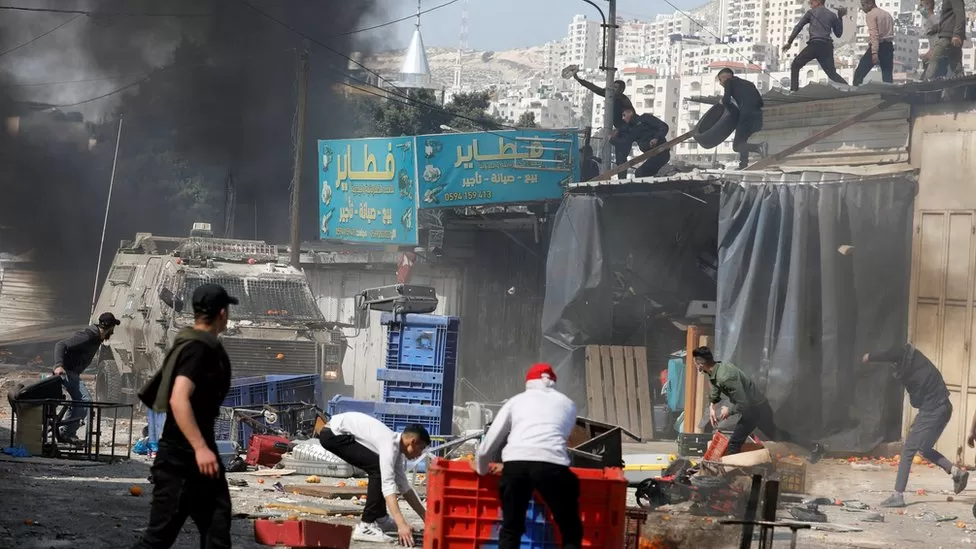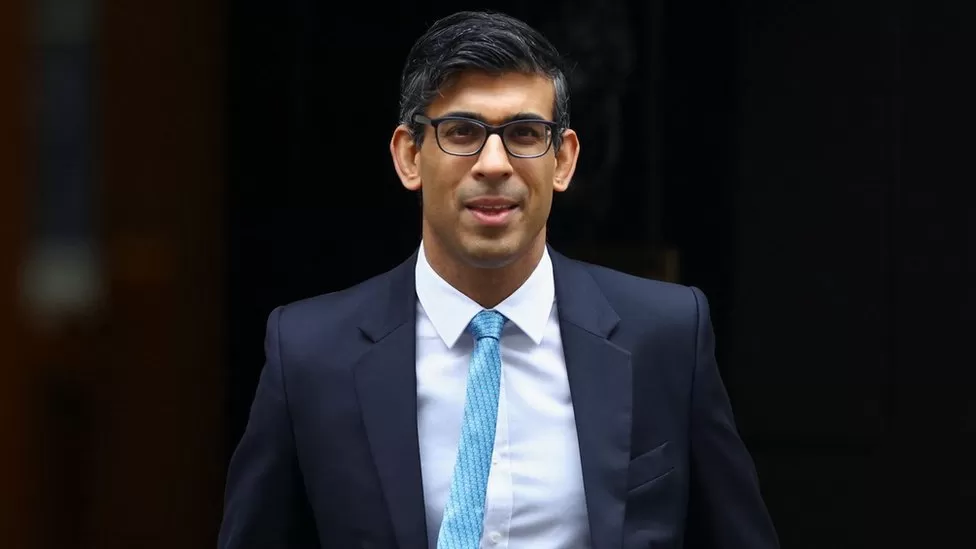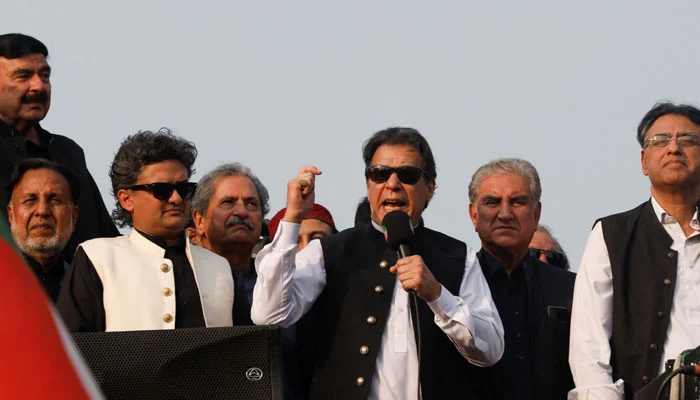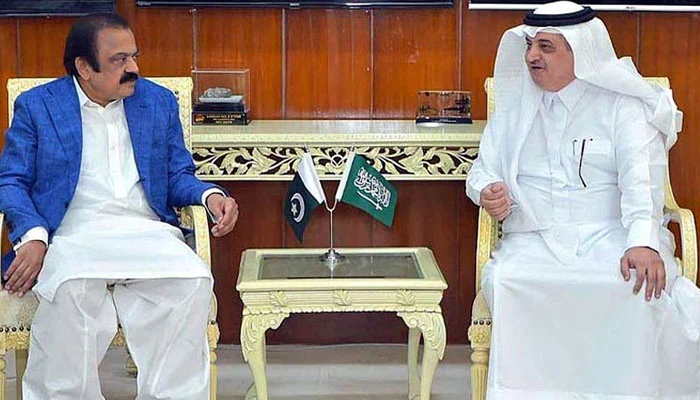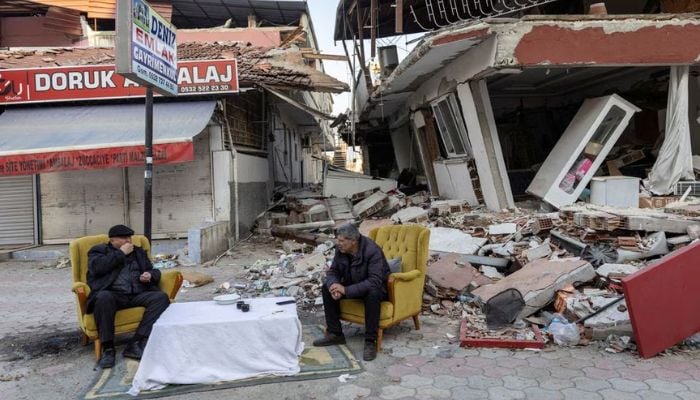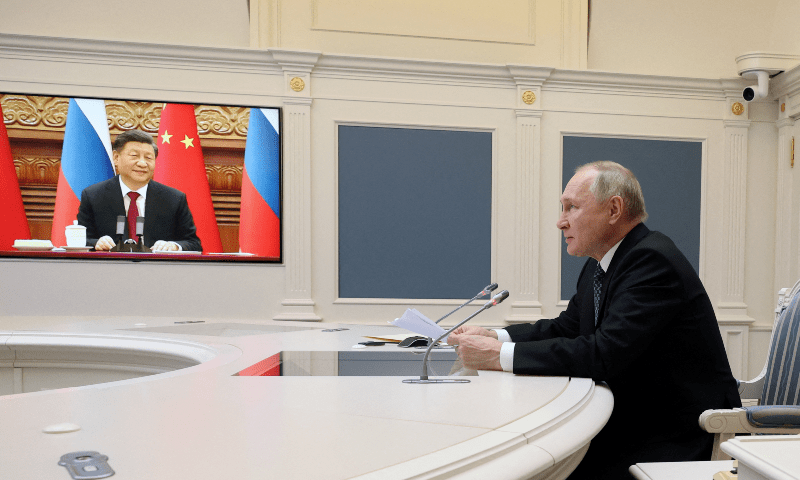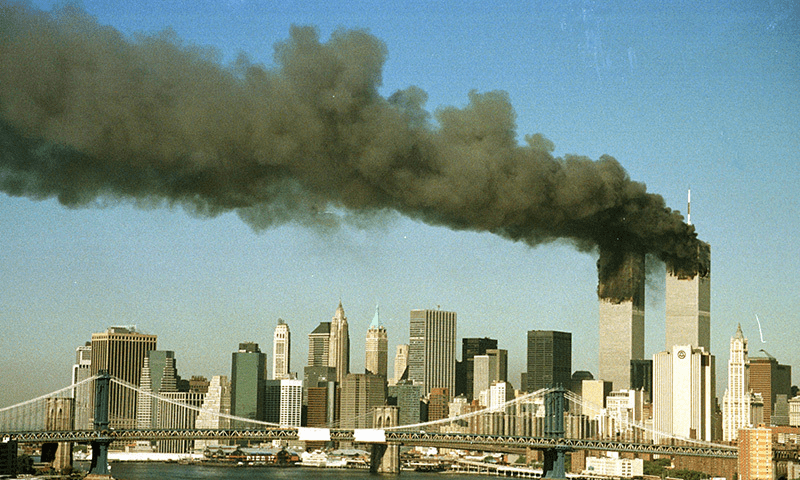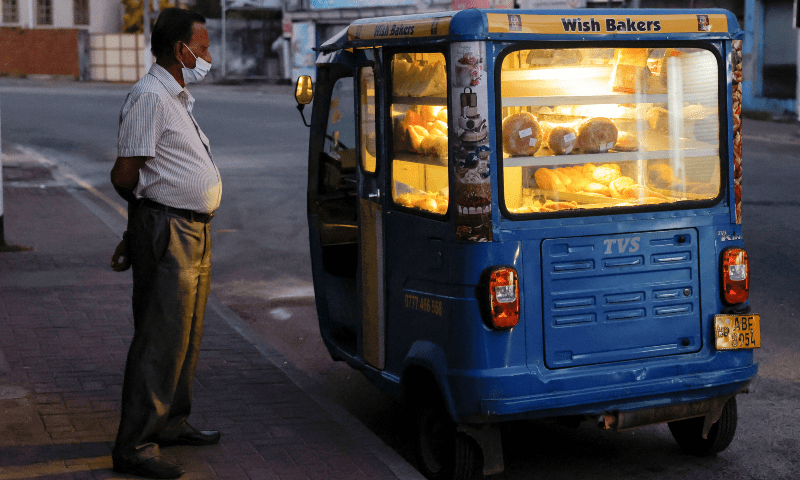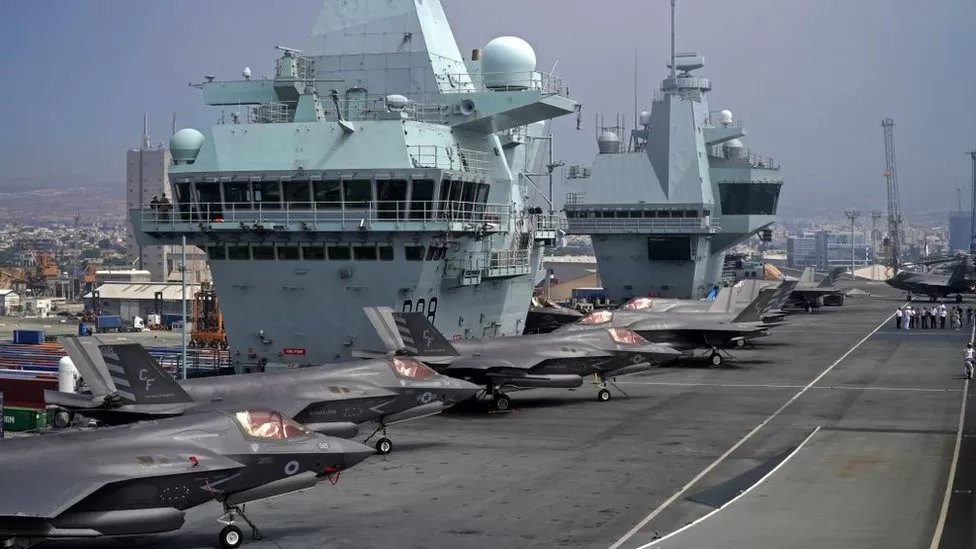Explosions and gunfire sounded as troops entered the old city of Nablus on Wednesday morning, sparking armed clashes with Palestinian gunmen.
The Israeli military said it killed three wanted militants holed up inside a house who refused to surrender.
Several of those killed outside were civilians, including two elderly men.
The Palestinian health ministry said 72-year-old Adnan Saabe Baara was one of them. Video footage purportedly showed his body in a street next to bags of bread, in what is usually a busy market area.
A 61-year-old man, Abdul Hadi Ashqar, and a 16-year-old boy, Mohammad Shaaban, were also shot dead, the ministry said.
Another elderly man, Anan Shawkat Annab, 66, who suffered from tear-gas inhalation, died in hospital on Wednesday evening.
Six members of the Lions’ Den and other militant groups were killed during the raid, the Lions’ Den said in a Telegram post.
The number of dead is one more than that of an Israeli military raid last month in Jenin, which was the deadliest in the West Bank since 2005.
What makes this raid even more significant is the huge numbers wounded, with the Palestinian health ministry saying more than 80 people have suffered bullet wounds. Five different hospitals in Nablus are currently treating them.
Senior Palestinian official Hussein al-Sheikh condemned what he described as a “massacre”, while a spokesman for Palestinian President Mahmoud Abbas said he held Israel’s government responsible for “this dangerous escalation, which is pushing the region toward tension and an explosion”.
The militant group Hamas, which controls the Gaza Strip, warned that it was “monitoring the escalating crimes conducted by the enemy against our people in the occupied West Bank and is running out of patience”.
The raid lasted four hours and took place in the middle of morning, when the narrow streets of the old city are often packed with families and people shopping.
Resident Khalil Shaheen described hearing an explosion, which woke him up.
“I looked out the window and saw special forces with dogs, and they were connecting wires, which I assume are for TNT [explosives], God knows,” he said.
The Israel Defense Forces (IDF) said it “upgraded” its operation after forces were shot at by Palestinian gunmen. Its troops fired shoulder-launched missiles at the building where the wanted militants were hiding, which caused it to partially collapse.
It said it acted when it did because it had real-time information – thought to be a geolocated Facebook post – on the location of one of the militants.
“We saw the threat and we had to go in and finish the work,” IDF spokesman Lt Col Richard Hecht said in a briefing to reporters.
But Palestinian videos posted on social media also show young men in the street, who appear unarmed, apparently being fired at while running away, with one falling to the ground as gunshots are heard. The IDF described the footage as “problematic” and said it was being reviewed.
Two of the militants in the encircled building were Muhammad Junaidi, a commander in Palestinian Islamic Jihad, and another senior militant figure, Hussam Isleem.
The IDF said they and the third militant, Walid Dkhail, were suspected of carrying out previous shooting attacks, including one in the West Bank last October that killed an Israeli soldier, and of planning more attacks in the near future. Two other suspects were arrested in Nablus last week.
During the raid, Isleem recorded a WhatsApp audio message that was shared on social media, saying: “We’re in trouble, but we won’t surrender ourselves. We won’t hand over our weapons. I’ll die as a martyr. Keep carrying weapons after us.”
Isleem’s house had been raided by Israeli forces earlier this month and his family interrogated. His father told Palestinian media afterwards that forces told him his son should hand himself in or he would be killed.
Both Isleem and Junaidi were active in the Lions’ Den – a new militant group that emerged in Nablus over the last year amid a collapse in control by the official Palestinian Authority security forces.
As with a similar group in the nearby city of Jenin, the young gunmen used TikTok and Telegram to spread a message of armed resistance against the Israeli occupation to a new generation of Palestinians.
Israel has targeted parts of both cities in waves of search, arrest and intelligence-gathering raids, saying it is trying to stem the spate of deadly attacks against Israelis.
So far this year, more than 60 Palestinians – including militants and civilians – have been killed, while 11 people have been killed in Palestinian attacks targeting Israelis.
Wednesday’s deadly raid in Nablus is a further sign that recent attempts led by the US to ease tensions are failing.
This week, the Palestinian Authority abandoned its push for a vote at the UN Security Council on a resolution which would have censured Israel’s new nationalist government over its plans to expand Israeli settlements in the West Bank.
As part of an apparent understanding, Israel then said it would not announce new settlements in the coming months. According to sources quoted in the Israeli media, Israel was also to lower the intensity of its raids into Palestinian cities.


